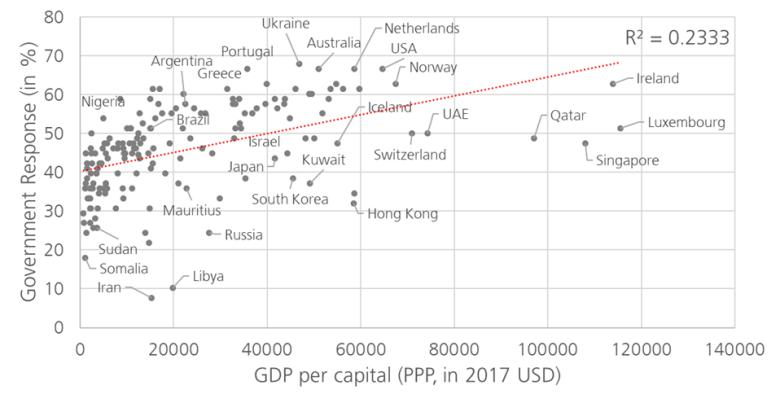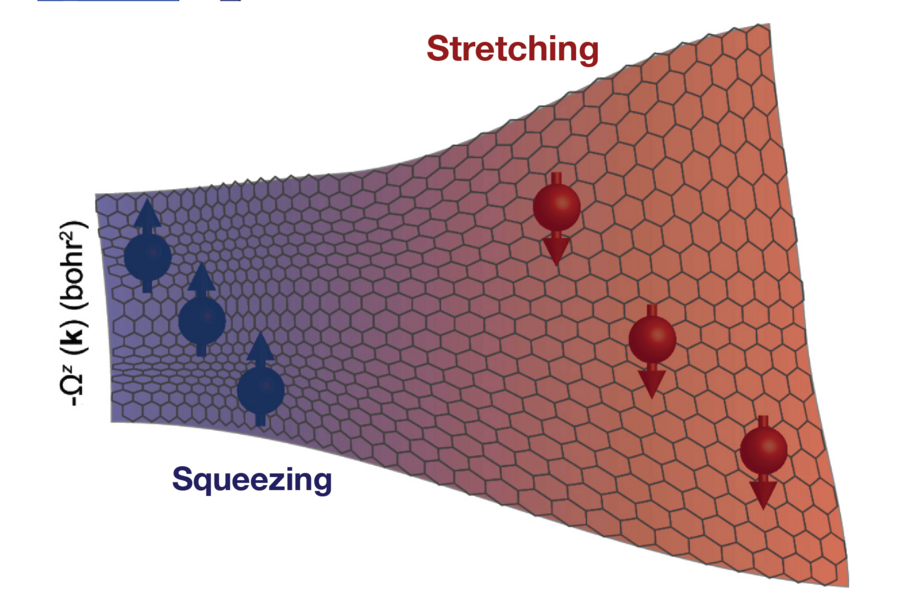We would like to thank our generous sponsors for making this article possible.
The numbers living in modern slavery has been growing in recent years, courtesy of the pandemic and climate change. We must take concrete steps to eradicate these practices.
Slavery, simply defined as the ownership of one human being by another as property, has been around since the dawn of time. It transcends both ethnicity and race, and its abolition took centuries of struggle. Mauritania became the last country to abolish it in 1981.
Unfortunately, the outlawing of people ownership has not eliminated slavery; instead, it continues to persist in other forms, collectively defined by the descriptive term ‘modern slavery’. It includes exploitative practices such as debt-bondage, forced marriage, forced labor, child labor, and human trafficking.1

At its core, modern slavery is a measure of inequality. It is about who has power in society and who does not.
With the upcoming World Day against Trafficking in Persons on July 30th, two questions are worth exploring. First, what are the latest trends surrounding modern slavery, and second, what must be done to eradicate such barbaric practices?
The dark rise of modern slavery
According to the latest findings from the International Labor Organization and Walk Free Foundation, nearly 50 million people are in modern slavery today.2 Disturbingly, this means 9.3 million additional people have been condemned to bondage since 2016. Close to 28 million are in forced labor3 while 22 million are in forced marriages.
Most forced labor is due to private company practices. All-told, 86% of forced labor occurs in the private economy,4 with adult men more likely to be employed in manufacturing and construction and women more likely to be in domestic work. The remaining 14% of forced labor consists of commercial sexual exploitation, with four out of every five being a woman or a girl.
It would be egregious to think that slavery is solely a problem of the developing world. The Asia Pacific region accounts for the highest numbers of enslaved people, but this is due to the region’s pivotal role in global supply chains. Rich countries are often the beneficiaries of forced labor.
Indeed, in 2022 alone the US Customs and Border Protection stopped USD 816.5 million worth of products, up from USD 55 million in 2020,5 as it enforced a legislative mandate to prevent goods made with forced labor from entering US markets.
It is also worth noting that GDP acts as today’s key output indicator of economic progress, but it has a weak correlation with steps taken by governments to tackle slavery (figure 1).
Figure 1: Positive but weak correlation between GDP and government response6

Source: Walk Free 2023, World Bank, UBS
The poor and displaced in society are the most vulnerable to slavery as they are forced to seek precarious work out of economic necessity. Migrant populaces offer a key example, with the proportion of migrants in forced labor being higher than migrant workers in the total global labor force (15% versus 5%).7
Pandemic-related disruptions in income and the economic repercussions of the war in Ukraine have served to push an additional 75 million to 95 million individuals into poverty.8 Migration numbers have also been rising because of the increase in climate-related events such as floods and drought. Weather-related disasters contributed to more than half of the 60.9 million newly internally displaced persons in 2022,9 with the rest migrating to other countries.
Research indicates that these forced migrants are vulnerable to exploitation, forced labor and trafficking. For example, the loss of agricultural livelihoods in Bangladesh has driven families in the Sunderbans to urban settlements where they are likely to accept exploitative work. In doing so, they may very well be contributing to the supply chains of global businesses.10
Research in the same region has shown an uptick in human trafficking following a cyclone, when criminal networks prey on vulnerable women and men desperate to cross the border to India to find work.11
The bright glimmer of hope
While modern slavery numbers have been climbing, a few positive trends provide hope. There is increasing awareness about modern slavery, especially among younger consumers, who care about social and environmental change and are willing to pay more for sustainable products. Millennials and Gen-Xers, who contribute to the trillions of dollars in public and private asset management, want to align these values with their investment decisions.
Further, there is a growing amount of publicly accessible data that can offer information about a company’s transparency of forced labor in their supply chains. The data suggests companies are mostly focused on meeting compliance regulations as opposed to directly addressing the causes of forced labor, but this transparency allows visibility into where improvements must be made.4,12
How to end the scourge of modern slavery
While we have lost ground on combating modern slavery versus where we were pre-pandemic, we know what needs to be done.
The overarching goal should be to end modern slavery by underscoring the human rights link between responsible business conduct and sustainable development13. We believe four actions are necessary:
- Motivate companies to profit people and planet: Our vision of the impact economy14 posits that companies can no longer be driven solely by profit, at significant cost to people and planet. Instead, businesses and investors need to pro-actively evaluate the environmental, social, and financial impacts of any investment—from due diligence and risk management through the entire life cycle of operations, products, and services. A systemic lens to investing that considers root causes, risks, and impacts across all three areas can also promote equity and inclusion among marginalized women, children, and migrants—the groups most affected by forced labor.15
- Government legislation: Governments must introduce legislation to incentivize businesses to assess risks and remediate where needed to address the root causes of the adverse impacts on human rights. In June, members of the European Parliament voted in favor of new legislation that would require EU companies to risk-assess and prevent harm to human rights, the climate, and the environment in their global value chains16. This is progress, even if the road to implementation is likely to be arduous.
- Impact transparency: “We cannot fix what we cannot see.”17 There are frameworks and metrics to assess risks for forced labor in supply chains, and legislation can demand greater transparency in them. A company’s balance sheet should reflect social and environmental impacts alongside profit and loss statements18.
- Citizen engagement: Finally, these actions require the participation of the people within the supply chain if they are to have legitimacy. Engaging these people throughout the investment life cycle is key to ensuring our intentions, tools and policies have the intended impact. Fundamentally, forced labor is about a lack of power; it is critical that we give these marginalized groups the power to have control over their lives and earn a decent wage.
1https://www.walkfree.org/what-is-modern-slavery/
2Global Estimates of Modern Slavery: Forced Labor and Forced Marriage: ILO, Walk Free, and IOM, Geneva, 2022.
3refers to “all work or service which is exacted from any person under the menace of any penalty and for which the said person has not offered himself volun¬tarily.”
4refers to work imposed by private individuals, groups, or companies in any branch of economic of activity.
5https://www.cbp.gov/newsroom/national-media-release/cbp-highlights-top-2022-accomplishments
6Government response data from Walk Free, 2023, The Global Slavery Index 2023, The Minderoo Foundation
7Global Estimates of Modern Slavery: Forced Labor and Forced Marriage: ILO, Walk Free, and IOM, Geneva, 2022.
8The Sustainable Development Goals Report 2022: United Nations
9https://www.internal-displacement.org/global-report/grid2023/
10https://www.antislavery.org/the-global-climate-crisis-how-climate-induced-migration-is-trapping-vulnerable-people-into-modern-slavery/
11https://justiceandcare.org/policies-and-reports/issue-brief-climate-and-conflict-induced-migration-and-modern-slavery/
12https://www.business-humanrights.org/en/from-us/briefings/forced-labour-risks-remedy-and-changing-regulation-knowthechain-investor-briefing/; https://beyondcompliance.wikirate.org/dashboard/financial-sector
13Gro Harlem Brundtland: Development that meets the needs of the present without compromising the ability of future generations to meet their own needs
14www.ubs.com/impact-economy
15https://www.blackenterprise.com/the-investment-integration-project-announces-racial-equity-working-group-to-tackle-racial-injustice-as-a-systemic-risk/
16https://www.europarl.europa.eu/news/en/press-room/20230524IPR91907/meps-push-companies-to-mitigate-their-negative-social-and-environmental-impact
17High Commissioner for Human Rights in her opening remarks to the 50th session of the Human Rights Council
18https://www.hbs.edu/impact-weighted-accounts/Pages/default.aspx
The author is grateful for feedback from: Karianne Lancee, Richard Mylles, Jackie Bauer, Mike Ryan, Richard Morrow.
For further information, please visit www.ubs.com/institute-disclaimer
By: Nalini Tarakeshwar
Originally published at: UBS









